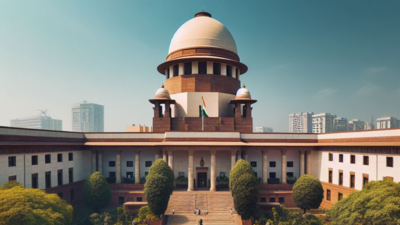NEW DELHI: Supreme Court on Thursday acquitted a death row convict who spent 12 years in jail out of which eight years were under the shadow of death for allegedly killing his wife, mother and two-year-old daughter in 2012 in Pune. It found that there was no conclusive evidence to prove his guilt and directed his release from jail.
A bench of Justices B R Gavai, Prashant Kumar Mishra and K V Viswanathan set aside an order of the trial court and Bombay HC which awarded death sentence after holding him guilty in the triple murder case.After analysing and evaluating all the evidence, the bench found them to be not enough to convict him and held that a person cannot be held guilty merely on the basis of suspicion.
“It is settled law that suspicion, however strong it may be, cannot take the place of proof beyond reasonable doubt… An accused is presumed innocent unless proved guilty beyond reasonable doubt,” the bench said. The trial court and HC convicted him on the basis of the statement of a neighbour but SC said it was full of contradictions and the circumstantial evidence was also not convincing to draw a conclusion of guilt.
“…it is necessary for the prosecution that the circumstances from which the conclusion of guilt is to be drawn should be fully established. The Court held that it is a primary principle that the accused ‘must be’ and not merely ‘may be’ proved guilty before a court can convict the accused. It has been held that there is not only a grammatical but a legal distinction between ‘may be proved’ and ‘must be or should be proved’. It has been held that the facts so established should be consistent only with the guilt of the accused, that is to say, they should not be explainable on any other hypothesis except the one where the accused is guilty. It has further been held that the circumstances should be such that they exclude every possible hypothesis except the one to be proved,” Justice Gavai, who penned the judgement for the bench, said.
